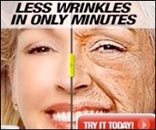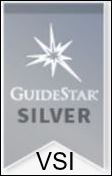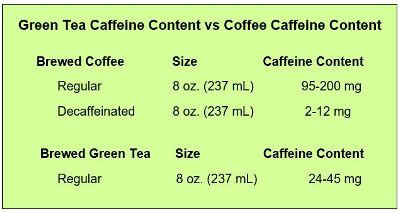In This Issue
Message From the
Executive Director
Support VSI
Vitiligo, the Internet, and
OTC Drugs: Buyer Beware!
What's On Your Mind?
- Is Green Tea Good for Vitiligo?
Medical News Updates
- Vitiligo and Hearing Loss
- Phototherapy Reduces Risk of Fracture
Research & Clinical Trials
Bibliography & Sources
New! Support VSI With eBay
Earn Funding for VSI
When you Shop!
 Now Visit VSI Now Visit VSI
on Facebook
 And Twitter And Twitter
View Past Newsletters
VSI Medical and Scientific
Advisory Committee
- Pearl E. Grimes, M.D., Committee Chair
- Ted A. Grossbart, Ph.D.
- Sancy A. Leachman, M.D.
- I. Caroline Le Poole Ph.D.
- Mauro Picardo, M.D.
- Nanette B. Silverberg, M.D.
- Richard A. Spritz, M.D.
- Alain Taieb, M.D., Ph.D.
- Wiete Westerhof, MD, Ph.D.
|
| |
| |
How to Log In:
Have you have forgotten your Login ID and/or Password?
No Problem!
Just go to the
Community Page
Scroll down to
the login box.
LOOK UNDERNEATH!
You'll see instructions to have them sent to the email address on your account. |
|
How to Log In:
Have you have forgotten your Login ID and/or Password?
No Problem!
Just go to the
Community Page
Scroll down to
the login box.
LOOK UNDERNEATH!
You'll see instructions to have them sent to the email address on your account.
|
|
How to Log In:
Have you have forgotten your Login ID and/or Password?
No Problem!
Just go to the
Community Page
Scroll down to
the login box.
LOOK UNDERNEATH!
You'll see instructions to have them sent to the email address on your account.
|
|
How to Log In:
Have you have forgotten your Login ID and/or Password?
No Problem!
Just go to the
Community Page
Scroll down to
the login box.
LOOK UNDERNEATH!
You'll see instructions to have them sent to the email address on your account.
|
|
| |
| Contact Us
Online
VitiligoSupport.org
Email Contact Us
Postal Mail Address
Vitiligo Support International
P.O. Box 3565
Lynchburg Va 24503
Phone
(434) 326-5380 |
|
|
Message From the Executive Director
  Dear Members and Friends of VSI, Dear Members and Friends of VSI,
What matters most to you? Treatment, or finding a doctor who really cares? The answer will likely be the result of a myriad of factors such as age, ethnicity, gender, or how long you’ve been affected.
Over the years, VSI has heard from hundreds, if not thousands, who’ve reported the devastation, first, from the impact of vitiligo, then further compounded by the insensitivity of their doctor.
In America, by the time the average vitiligo patient is seen by a dermatologist, the vitiligo has been spreading for at least 6 months. They pin all of their hopes on this long awaited office visit ... when many are then told:
Treatments don't work, and the side effects are worse than the disease.
Even if you regain some of the pigment, you'll just lose it again.
It’s just a skin disease, be glad you don’t have cancer.
It’s only cosmetic, it won’t hurt you…….
By whose assesment does vitiligo not hurt?
The emotional impact of vitiligo
affects all genders, all ages, and all races.
The following quotes from VSI members accentuate not only the problem of insensitivity, but the lack of knowledge about current vitiligo treatments.
My doctor said that all vitiligo treatments are dangerous
and don't work, and that anyone who says otherwise is lying. -C.R.
My dermatologist said I'm too old for treatments,
and that the risk of skin cancer from light treatment
is far worse than the appearance of vitiligo.
I don't think he understands what I am going through. -C.B.
I had not intended this column to come across as negative. In fact, just the opposite. I am here to report that the above paradigm is finally shifting. More and more dermatologists DO care, and DO understand that vitiligo is more than just pigment loss.
As Dr. Pearl Grimes put it:
it’s about the “white patches and bruised souls.”
This past September, VSI participated in the vitiligo conference in Orange CA., where we enjoyed a fabulous social the night before the conference, and the next day, heard vitiligo information and updates from specialists from all over the world. However, one of the most positive outcomes of the event was a video that was created by doctors who care, with the purpose of generating awareness about the impact of vitiligo. If you can spare 4:07 to watch this moving video, I think you will agree that positive changes are underway.
Sincerely,

Jackie Gardner
Executive Director
Please Support VSI!
 When you donate to VSI, you are not only supporting its quarterly newsletters, When you donate to VSI, you are not only supporting its quarterly newsletters,
you are helping to sustain patient assistance; educational resources; and organizational programs and services that include national-level advocacy efforts to abolish the discriminatory practices of the insurance industry for vitiligo treatments, improve patient access to care, and increase skin disease medical research funding.
VSI needs your support to provide these valuable services.
Please Click Below and Become a Supporter Today!
 Become a VSI Supporting Member! Become a VSI Supporting Member!
Make a Donation Through VSI
Contribute through PayPal |

|
This organization is a Silver-level GuideStar Exchange
participant, demonstrating its commitment to transparency. |

Vitiligo, the Internet, and
Over-the-Counter Drugs: Buyer Beware
  Over the years, VSI has reported on many novel treatment modalities on the cusp of acceptance and/or availability, yet the reality always seems to bring us back to the same two, phototherapy (light) and topicals. While one, or a combination of the aforementioned works for many people, many others are seemingly left out in the cold due to a variety of accessibility problems. Over the years, VSI has reported on many novel treatment modalities on the cusp of acceptance and/or availability, yet the reality always seems to bring us back to the same two, phototherapy (light) and topicals. While one, or a combination of the aforementioned works for many people, many others are seemingly left out in the cold due to a variety of accessibility problems.
Treatment Barriers
- Inability to locate a dermatologist knowledgeable about,
and/or willing to prescribe current treatments
- Months long waiting lists for dermatology appointments
- Treatment expense
- Insurance Denials
- Scheduling conflicts for in-office treatments
Myths and Misinformation
In today’s fast-paced society, the internet has become a valuable tool for everything from researching your ancestry to grocery shopping. However, online platforms can also perpetuate misinformation as it spreads from source to source. Patients seeking answers may have a hard time sorting valuable information from the misinformation they’ve received either from a doctor or another allegedly credible source, which unfortunately can also become another barrier to treatment.
Vitiligo Myths to be Aware of:
Vitiligo causes increased risk of skin cancer.
  Many online sites, as well as doctors, still perpetuate the myth that vitiligo patients have an increased risk of skin cancer. This misinformation results in many patients being denied access to much-needed phototherapeutic light treatments. However, a 2010 NIH-sponsored study discovered the opposite to be true. Multiple studies conducted since that time have gone on to assess the risk of skin cancer in those with vitiligo to be THREE TIMES less than the normal population. Many online sites, as well as doctors, still perpetuate the myth that vitiligo patients have an increased risk of skin cancer. This misinformation results in many patients being denied access to much-needed phototherapeutic light treatments. However, a 2010 NIH-sponsored study discovered the opposite to be true. Multiple studies conducted since that time have gone on to assess the risk of skin cancer in those with vitiligo to be THREE TIMES less than the normal population.
Protopic causes cancer
  In 2005, The FDA added a “black box warning,” or warning of possible severe side-effects, to both Protopic and Elidel. The warning of an increased risk of skin or other cancer, was related to oral tacrolimus used for transplant patients, and not for topical tacrolimus (Protopic) used for the treatment of skin conditions. Multiple subsequent retrospective reviews and case studies have not found either of these topicals to be associated with an increased risk of non-melanoma cancer. In 2005, The FDA added a “black box warning,” or warning of possible severe side-effects, to both Protopic and Elidel. The warning of an increased risk of skin or other cancer, was related to oral tacrolimus used for transplant patients, and not for topical tacrolimus (Protopic) used for the treatment of skin conditions. Multiple subsequent retrospective reviews and case studies have not found either of these topicals to be associated with an increased risk of non-melanoma cancer.
Accessibility and Misconceptions
Drive Patients Underground
When the frustrations of trying to obtain vitiligo treatments seem insurmountable, many, seeing nowhere else to turn, are driven to the internet, where they enter the virtual maze of the online world.
Even though the warning Caveat Emptor, (Buyer Beware) has been around since the 1500s, in today’s age of the “online superhighway,” the expression carries an even stronger message.
Don’t be Duped! - Do Your Homework!
Looking for credible information online can be a bit like panning for gold - you may have to sift through a lot of useless, or even harmful, information before you find anything of value.

Tips for Searching the Internet:
Verify the Source.
Is it a company page, a personal blog, or a blog from a trusted source like the National Institutes of Health or a university research department?
Just Because You Read it on the Internet......
One person having an adverse reaction to a certain medication, treatment, or supplement, does not necessarily mean the same will be true for you. For instance - if someone shares on their blog that they had a bad case of the flu, and their vitiligo worsened after taking the flu medicine their doctor prescribed, this does not mean that everyone should avoid flu medication. It’s just as likely that the stress on the immune system from being ill with the flu virus caused an uptick in the vitiligo. Following the blogger’s advice to avoid taking flu medication may actually result in a more severe case of the flu, potentially causing even greater pigment loss. It’s always a good idea to run an independent search to corroborate information that could impact your health or well-being.
Beware of False Claims! Intrigue and Hype Are Designed to Sell Products.
  If a site leads with statements such as “What Your Doctor Won’t Tell You,” or “Guaranteed Results in 60 Days,”or cites claims of a miraculous cure with the information locked away for a price, you can be fairly certain it’s not legitimate. If it were a credible product, it would not be a secret, and you would not have to pay to learn more. Verify that the information is based on credible research and not simply a company trying to sell a product. Unscrupulous companies play on the patient’s emotions to peddle their goods. If a site leads with statements such as “What Your Doctor Won’t Tell You,” or “Guaranteed Results in 60 Days,”or cites claims of a miraculous cure with the information locked away for a price, you can be fairly certain it’s not legitimate. If it were a credible product, it would not be a secret, and you would not have to pay to learn more. Verify that the information is based on credible research and not simply a company trying to sell a product. Unscrupulous companies play on the patient’s emotions to peddle their goods.
Beware of Paid Ads! Check Multiple Sources.
The results at the top of a browser search page are often paid ads. In some cases, these are marked with the word “Ad” in a yellow box next to the URL of the site. To get a less biased result, try a browser search using the name of the product along with the word vitiligo. Look for pages that are not in any way associated with the company itself, by looking at the link (URL) before you open it, to be certain it doesn’t contain any part of the company name.
Learn to Identify Reputable Sources
The biggest challenge when sorting through the nearly one billion websites now in existence is identifying reputable sources of information. Anyone with access to the internet can start a website or blog, but that doesn’t mean that the information posted is helpful, or even true.
Who owns, or runs the website?
If you have difficulty figuring out who owns the page and is responsible for the content, try the “About Us” links. Most legitimate sources are easily identifiable. If you’re not sure of the source, you’re well advised to be skeptical of the information provided.
  Social media, blogs, and community sites offer the valuable opportunity to network with other vitiligo patients and share common experiences. However, keep in mind that the information found there is often opinion rather than fact-based. That’s not to say the information is necessarily wrong, but should be taken for what it is, and fact-checked for verification. Social media, blogs, and community sites offer the valuable opportunity to network with other vitiligo patients and share common experiences. However, keep in mind that the information found there is often opinion rather than fact-based. That’s not to say the information is necessarily wrong, but should be taken for what it is, and fact-checked for verification.
Websites Associated with an Established Business
Websites associated with recognized business’s or organizations, such as those below, are likely to provide reliable and fact-based information.
Remember, regardless of the ownership of the site, entries from the general public, such as testimonials, blog comments, forum posts, and Facebook pages are more likely to be personal experience or opinion. Whether social media, business or organization, learn to verify reputable sources and always do your background fact-checking before making decisions that could impact your health.
Is There a Conflict of Interest?
  If the main focus of a website is to sell a product, be aware that most of the information shared will likely be to promote sales, and may be biased. Even glowing testimonials aren’t a guarantee of the efficacy of a product. Unlike Amazon, many companies only publish positive reviews. If the main focus of a website is to sell a product, be aware that most of the information shared will likely be to promote sales, and may be biased. Even glowing testimonials aren’t a guarantee of the efficacy of a product. Unlike Amazon, many companies only publish positive reviews.
If a company states it has research to prove its product claims, find out more about the research. Was the research published? Was it anecdotal information from a small group of loyal customers, or was it a double-blind study performed by an independent researcher?
  If you are not familiar with an organization, it’s not always easy to determine its credibility. If you are researching a non-profit organization, GuideStar is a good non-biased resource. However, just having a listing with Guidestar does not convey automatic credibility or good standing. Nonprofit organizations that have provided additional evidence of financial health and transparency are eligible for one of Guidestar’s Bronze, Silver, or Gold Level. Exchange Seals. If you are not familiar with an organization, it’s not always easy to determine its credibility. If you are researching a non-profit organization, GuideStar is a good non-biased resource. However, just having a listing with Guidestar does not convey automatic credibility or good standing. Nonprofit organizations that have provided additional evidence of financial health and transparency are eligible for one of Guidestar’s Bronze, Silver, or Gold Level. Exchange Seals.
You must go to the organization’s page to verify that the account is in good standing with updated financial information. VSI is a Silver Level Guidestar Exchange Participant.
OTC Supplements - Hype or Help?



One of the more controversial categories of vitiligo treatment, and one that many patients seek out on their own via the internet, are over-the-counter (OTC) supplements. Over the years, VSI has reported on various research studies showing positive results for certain OTC supplements (including vitamins) in the treatment of vitiligo. However, the medical community remains divided on this topic.
Some doctors feel supplements are a waste of money and provide no health benefits; others aren’t opposed to them, but are not convinced they provide any benefits; while a third group feels there’s enough research to support the use of supplements in conjunction with the mainstream vitiligo treatments such as light therapy and topicals. So, while they may enhance the effectiveness of other treatments, they’re typically not considered a stand-alone alternative.
Most vitiligo supplements fall into two basic categories:
- Those addressing a deficiency found in many vitiligo patients.
- Antioxidants and polyphenols, both of which help combat oxidative stress.
| Oxidative Stress
Oxidative stress is an imbalance between the production of free radicals and the ability of the body to counteract or detoxify their harmful effects through neutralization by antioxidants. |
Hydrogen Peroxide, Oxidative Stress, and Vitiligo
Many of us are familiar with the hydrogen peroxide in a brown bottle that’s used to clean wounds. What you may not know is that our cells produce small amounts of hydrogen peroxide as part of our natural biochemical processes. However, if not kept in balance, it can be toxic to our cells, and is even thought to be related to causing our hair to gray as we age. In most people, the hydrogen peroxide is broken down by a naturally-occurring enzyme called catalase. Vitiligo patients’ bodies produce insufficient catalase to fully break down the hydrogen peroxide, resulting in an overabundance, which leads to oxidative stress.
Combating Oxidative Stress with Supplements.
 
The most common category of supplements used to battle oxidative stress is antioxidants. Antioxidants help the body fight free radicals by repairing damaged cells and supporting healthy cells. Polyphenols are a type of antioxidant found in foods, and are currently being studied for their ability to facilitate repigmentation of the skin. Eating a wide range of fruits and vegetables, particularly those with bright colors, can help keep cells healthy; however, in some cases, supplementation may also be of help.
Below are some of the antioxidant and polyphenol supplements that have been researched for the treatment of vitiligo. Most combat oxidative stress and support repigmentation when used in conjunction with light therapy.
• Alpha Lipoid Acid
• CoQ10
• Ginkgo biloba
• Green tea
• Polypodium leucotomos
• Quercetin
• St. John’s Wort
• Seleniu
Deficiencies Commonly Found with Vitiligo
Research has shown that, for a variety of reasons, many, though not all, vitiligo patients have deficiencies in folic acid, vitamin B12 and vitamin D. While supplementation can be helpful in some instances, it’s important that you work with your doctor to establish your baseline levels prior to beginning any supplementation, as well as continuing to monitor your levels while taking the supplements.

As Paracelsus Wrote in the 16th Century:
“All substances are poisons, there is none which is not a poison.
It is the dose that distinguishes a poison from a remedy.” |

Many people are under the incorrect assumption that vitamins and supplements are natural and therefore safe to consume without precaution. Not only can incorrect dosages be dangerous, but many supplements can have unexpected and/or dangerous interactions when taken in combination with other medications, resulting in either an increase or decrease in the intended use or effect.
Your body needs a certain number of free radicals to function correctly - taking the recommended dosages of antioxidants can help keep the excess free radicals in check, but too many, or even taking too many at one time, can upset the balance.
Studies have reported that very high doses of antioxidants (either a mega dose at one time, or very high doses over a longer period of time), can create antioxidant-induced stress, which may cause symptoms ranging from decreasing the effectiveness of prescription medication to an increased incidence of heart disease, and even death.
  As noted above, just because one person had a negative response to a treatment, that doesn’t mean the same will be true for all others. Keep that in mind when you read or hear about research, or even a personal story by a blogger, reporting a specific dose of a vitamin or supplement that produced a positive result. There are many reasons why one size does NOT fit all. No two people are the same. They do not consume the same diet, have the same family history, environmental exposures, or deficiencies. As noted above, just because one person had a negative response to a treatment, that doesn’t mean the same will be true for all others. Keep that in mind when you read or hear about research, or even a personal story by a blogger, reporting a specific dose of a vitamin or supplement that produced a positive result. There are many reasons why one size does NOT fit all. No two people are the same. They do not consume the same diet, have the same family history, environmental exposures, or deficiencies.
While it would be unlikely to experience an overdose of vitamins or antioxidants through diet alone, that’s most definitely not the case with supplementation. Many vitamins and supplements can have quite dangerous side effects if taken in high dosages or improper combinations.
  Green tea has been shown to be beneficial as a beverage, but the extract, which is highly concentrated, can cause or accelerate liver disease if taken in very high doses. Green tea has been shown to be beneficial as a beverage, but the extract, which is highly concentrated, can cause or accelerate liver disease if taken in very high doses.
Vitamin D deficiency has been reported to contribute to many health problems from an increased risk for cancer and cardiovascular disease, to triggering the onset of autoimmune disease. However, too much has its risks as well.
An imbalance of Vitamin D, A, and K, and the minerals calcium and magnesium can lead to leg and foot cramps. Too much vitamin D can lead to an excess known as hypercalcemia, with symptoms ranging from nausea, vomiting, and an abnormal heart rhythm, to kidney stones and even kidney damage.
Research has shown that Narrow-Band UVB (NB-UVB) therapy increases the amount of vitamin D in your system even more than sunlight and has been shown to be even more potent than oral supplementation. If your Vitamin D baseline testing was done before you started NB-UVB treatment, or you’ve recently taken a break from the therapy, ask your doctor about rechecking your levels.
Folic acid and vitamin B12 should be taken together.
Supplements for vitamin B12 often contain folic acid (synthetic form of folate) ensuring that the two vitamins are in balance and can work properly together. Having too much folate can mask the symptoms of Vitamin B12 deficiency, which can lead to progressive & irreversible damage in the brain, spinal column, and peripheral nerves.

Quality Control for OTC Supplements
Many people assume that the Food and Drug Administration (FDA) monitors OTC products the same way as prescribed drugs, but this is far from true. There is very little government regulation of supplements, which can leave the door open for useless, and even harmful ingredients ending up in your medicine cabinet.

In early 2015, the New York Surgeon General filed a cease and desist notification to GNC, Target, Walgreens, and Walmart for misstating the contents on the labels of their supplements. Investigators tested 24 products claiming to be echinacea, garlic, gingko biloba, ginseng, saw palmetto, St. John’s wort and valerian root. All but five contained unrecognizable substances or ingredients of plants other than what the product claimed to be, including potential allergens not noted on the label.

Washington Post Article: 2/03/16
By Sarah Kaplan
“Those store-brand ginkgo biloba tablets you bought may contain mustard,
wheat, radish and other substances decidedly non-herbal in nature,
but they’re not likely to contain any actual ginkgo biloba.” |

A 2013 study found that more than half of FDA Class 1 drug recalls between 2004 and 2012 were for dietary supplements. Class 1 recalls are reserved for drugs or supplements for which there is a “reasonable probability that [their use] will cause serious adverse health consequences or death.”
A 2013 research letter published in the JAMA Internal Medicine (a peer-reviewed medical journal published by the American Medical Association), reporting on OTC and compounded vitamin D, found pills ranging from as low as 9 percent, to as high as 146 percent of the stated dose. Another 2013 vitamin D analysis published by Consumer Reports reported an even more alarming discovery of unacceptable levels of lead found in 9 of 12 vitamin D-calcium combination pills.
Who Can You trust?
  Help is at hand from the United States Pharmacopeia (USP), a watchdog group that sets rigorous standards for OTC supplements. Products which meet the standards and pass the testing are awarded the USP Verified Mark. To receive approval, products must contain the ingredients listed on the label in the correct amounts and strength, must not contain harmful contaminants, and must be manufactured according to FDA and USP-approved practices. Help is at hand from the United States Pharmacopeia (USP), a watchdog group that sets rigorous standards for OTC supplements. Products which meet the standards and pass the testing are awarded the USP Verified Mark. To receive approval, products must contain the ingredients listed on the label in the correct amounts and strength, must not contain harmful contaminants, and must be manufactured according to FDA and USP-approved practices.
Summary
Whether you’re browsing the internet or shopping in a store, remember the expression “caveat emptor.” It’s wise to do your homework, fact-check your information, and verify your sources before making a purchase, or more importantly, before taking a new vitamin or supplement. It’s not about saving time and money – it’s about your health.

Back to Top

What's On Your Mind?
Q. Is Green Tea Good for Vitiligo?
 I've heard that Green Tea is good for vitiligo, but I've also heard that some of the other teas (like White Tea and Red Tea) are actually higher in antioxidants. What’s the difference, and is one better for vitiligo than the other? I've heard that Green Tea is good for vitiligo, but I've also heard that some of the other teas (like White Tea and Red Tea) are actually higher in antioxidants. What’s the difference, and is one better for vitiligo than the other?
- Over the years, tea has been ascribed many health benefits, including cancer and heart disease prevention, in addition to helping vitiligo. All tea comes from the same plant, Camellia sinensis; the difference between the various types lies in their processing and, in the case of white tea, the part of the plant it comes from (early leaves and buds). Tea contains polyphenols, plant chemicals that have been shown to reduce oxidative stress, which is found in the skin of those with vitiligo. Tea polyphenols include catechins such as EGCG, EGC, ECG, and EC, with green and white teas being the highest in EGCG, the most active catechin. Black tea is lowest in catechins because of the leaves are fully oxidized, while white and green teas are less processed. Green tea has anti-inflammatory, anti-oxidant, and immunomodulatory properties, all of which can be helpful to those with vitiligo.
A 2014 Chinese study of the benefits of EGCG on vitiligo in mice found that it decreased the time, area, and prevalence of depigmentation. The authors concluded that the administration of EGCG was “significantly associated with a decreased risk of vitiligo.” While white tea contains similar amounts of EGCG to the green tea studied, it isn’t studied as often because it is rarer and more expensive than green tea.
How to increase the benefit: Interestingly, a 2007 study of the absorption rates of catechins by the body found that while minimal amounts of tea catechins were available when tea was consumed alone, however, adding juice, vitamin C, or milk seemed to protect the catechins from the digestive process, leaving more available to be absorbed. Lemon juice and rice milk increased catechin availability levels the most.
Hot, brewed teas contain more polyphenols than iced, instant, or ready-to-brew beverages, as polyphenol counts are affected by the type of tea, brewing time (longer is better), temperature (hotter is better), and the amount used.
Decaffeination reduces the catechin levels by more than half, so to derive the greatest health benefit decaffeination is not recommended. The good news is, green tea is naturally low in caffeine with about 24-45 mg per 8 oz cup, and white tea with only 15-20 mg is even lower.

Organic: Recent studies show an increase in pesticide use among tea-growers, consequently, organic tea may be a safer option. All teas contain fluoride, so be cautious of the quantity you drink in areas where the water is also fluoridated. Also, loose tea leaves are thought to provide more benefits than bagged teas, partially because the water has better access to the leaves to extract the most catechins when the leaves aren’t as tightly packed, and partially because some commercial teabags may contain more crushed leaves and stems.
The teabag itself: Many teabags contain compounds that can leach chemicals into the finished teas, including paper teabags treated with epichlorohydrin, (a carcinogen that can also affect fertility and suppress immune function), and teabags made with synthetic polymers such as nylon, thermoplastic, PVC, and polypropylene.
For more information about teas made with toxin-free teabags: Click here.

Medical News Updates
Highlights of recently-published medical
articles on vitiligo and its treatments
Vitiligo and Hearing Loss
  For centuries, the common thinking has been that vitiligo, an autoimmune condition affecting melanocytes (pigment-producing cells), was purely a cutaneous (skin) condition. However, some research has focused on the potential of non-cutaneous manifestations of the vitiligo-affected melanocytes in other areas of the body, notably the eyes and the ears. For centuries, the common thinking has been that vitiligo, an autoimmune condition affecting melanocytes (pigment-producing cells), was purely a cutaneous (skin) condition. However, some research has focused on the potential of non-cutaneous manifestations of the vitiligo-affected melanocytes in other areas of the body, notably the eyes and the ears.
A study published in February 2016 of 21 vitiligo patients and 20 healthy subjects examining the relationship between vitiligo and hearing reported the following:
High frequency sensorineural hearing loss (hearing loss associated with damage to the cochlea or inner ear) in 8 vitiligo patients, or 38.09%. Five patients had generalized vitiligo, 1 had total vitiligo, and 2 had segmental vitiligo. Three patients had sensorineural hearing loss in only one ear, while the remaining 5 were affected in both ears.
An abnormal increase in latency (the time it takes for an electrical wave to travel from the stimulation to the recording site/study area) was recorded in 10 patients (47.61%), primarily in the area associated with the cochlear nucleus.
Another test of the ear’s vestibular system showed some irregularities in 7 (33.33%) of the left ear in patients, but they were not statistically significant on the whole. The researchers felt that the melanocytes associated with the vestibular system may play some role in modulating vestibular stimuli, but the mechanism was not discovered during these tests.
While 8 patients displayed some degree of hearing loss at certain wavelengths, the pure tone average of all the participants was within the normal range, leading the researchers to conclude that the melanocyte damage may favor the development of partial hearing loss.
The study noted that the otic (ear) melanocytes seem to provide a protective role against environmental damage rather than being essential for normal hearing, as one previous study had found that albino mice had a higher rate of age-related hearing loss and a slower recovery of auditory thresholds after being exposed to noise compared to pigmented mice.
Phototherapy Reduces Risk of
Bone Fracture in Vitiligo Patients
A February 2016 study examined the effects of phototherapy on fracture risk in those diagnosed with vitiligo past the age of 40. The records of 3863 patients diagnosed in Taiwan between 2003 and 2009 were divided into 3 groups: frequent phototherapy, infrequent phototherapy, and no phototherapy. The fracture risk was examined overall and also by age and gender.
The results showed that frequent phototherapy reduced the fracture risks overall in vitiligo patients. These results were also confirmed for patients aged 40-64 and in female patients. Although it was thought that perhaps phototherapy could increase bone density, this was the first study to examine the effects of phototherapy on fracture risk, leading to the first evidence that frequent phototherapy can reduce the risk of fractures in middle-aged and in female vitiligo patients.

Back to Top
Research & Clinical Trials
New! Vitiligo Research Study in New York City.
Volunteers Wanted
Have you been diagnosed with vitiligo?
Would you like to take part in a research study
to help those who have been diagnosed?
We are looking for both healthy volunteers and persons diagnosed with vitiligo to take part in a research study.
The biology of vitiligo is poorly understood and while there are many treatment options, many carry the risk of side effects or are only temporarily effective. We are performing a study to improve our understanding of the biology of vitiligo. Subjects will be asked to come to 2 study visits. We will be collecting skin samples from both patients diagnosed with vitiligo as well as healthy adults for this study.
We will compare pigment cells from the two groups to identify differences that may contribute to progression of vitiligo. This information may allow us to develop improved treatments for vitiligo.
Study visits will take place at:
The Dermatology Clinical Studies Unit
NYULMC Ambulatory Care Center
240 East 38th Street, 11th Floor
New York, NY 10016
For more information, please contact:
212-263-5244
[email protected]
|
Phototherapy Study in Baltimore, MD.
Phototherapy Clinical Trial
for Generalized Vitiligo
Principal Investigator: Dr. Ginette Okoye
Study Location:
Johns Hopkins Outpatient Center
Department of Dermatology, Baltimore, MD.
Vitiligo is a chronic acquired skin disease of pigmentation that affects patients’
quality of life across all degrees of involvement and severity. Phototherapy is a
clinically indicated treatment for skin lesions. In this study, we are going to
evaluate the efficacy and safety of phototherapy in the treatment of vitiligo as
well as impact on quality of life.
Inclusion Criteria:
Must be over the age of 18
Must have a diagnosis of vitiligo that involves both sides of the body.
Participation Involves:
Phototherapy treatments (3 times per week for 6 months)
Questionnaires on how vitiligo affects the quality of your life
Small skin biopsies of your skin
If you are interested in participating or would like more information:
Contact: Dermatology Research
Phone: 410-502-7546 or Email: [email protected] |
Pilot Study In Boston, MA.
Open-label Pilot Study of
Abatacept for the Treatment of Vitiligo
Principal Investigator: Dr. Victor Huang
Study Location:
Brigham and Women’s Hospital Clinical Research Program
221 Longwood Ave. Boston, MA 02115
Abatacept has been shown to decrease T cell activity and reduce symptoms associated with rheumatoid arthritis. Similar pathways have been shown to be involved in vitiligo.
This study is seeking adult patients with active vitiligo to receive 24 weekly self-administered injections of abatacept, to see if the vitiligo lesions stop spreading, and start to repigment.
A 32 week follow-up visit will be performed to evaluate secondary endpoints as well.
Inclusion Criteria:
Must be over the age of 18
Must have actively progressive vitiligo (defined as development of new lesions or worsening of existing lesions within the past 6 months) covering at least 5% of body surface area
Subjects receiving treatment at the time of screening will be eligible providing they undergo a wash out period prior to starting the study
Women of childbearing potential (WOCBP) must be using an acceptable method of contraception throughout the study and for up to 10 weeks after the last dose of study drug, and have a negative serum or urine pregnancy test result (minimum sensitivity 25 IU/L or equivalent units of HCG) within 0 to 48 hours before the first dose of study drug
Sexually active fertile men must use effective birth control if their partners are WOCBP
Exclusion Criteria:
Pregnant or breastfeeding patients
Patients with segmental, acrofacial, or universal vitiligo
Patients with evidence of white hairs within the majority (>50%) of their vitiligo lesions
Patients currently on any other systemic biologic medication, current use of Abatacept, or any other systemic biologic medication within 2 months of study
Use of systemic immunosuppressive agent within 2 weeks prior to initiation of Abatacept
For additional study criteria see contact information below.
If you are interested in participating or would like more information:
Contact the Study Coordinator:
Andrea Craft at: 617-525-3161 or [email protected] |
Segmental Vitiligo Study in Detroit, MI. and Worcester, MA.
Study to Identify the Autoimmune Mechanism
Behind Segmental Vitiligo
Principle Investigators

Study Locations:
UMass Dept. of Dermatology
55 N. Lake Ave
Worcester, MA 01655
| | Henry Ford Dept. of Dermatology
3031 West Grand Boulevard
Detroit, MI 48202 |
Scientists from three United States academic centers are collaborating to identify how
and why the immune system initiates an autoimmune attack against specific pigment
cells in segmental vitiligo. By understanding why this happens, new treatments targeting
this process can be designed.
In segmental vitiligo, pigment cells on one side and area of the body are destroyed
leaving a white area behind. One theory as to why this specific area loses its pigment
cells is the pigment cells in segmental vitiligo may express different proteins from
other pigment and non-pigment cells in the body. In order to identify these differences,
a thin piece of repigmented (regain of color) vitiligo skin and sample of blood is needed.
Your participation is vitally needed
Eligibility requirements:
- Ages: 7-89 years of age
- Diagnosis of segmental vitiligo
- At least 1 spot of repigmentation (regain of color) within the segmental vitiligo
Exclusion Criteria: The following will not be eligible:
- Diagnosis of generalized vitiligo
What will happen if I participate?
- A small amount of blood will be collected in the same manner as blood drawn at your regular doctor’s office.
- A superficial piece of tissue (shave biopsy) will be taken from the area of segmental vitiligo. Shave biopsies are a common procedure performed at dermatology offices.
To participate, or for more information:
Contact: Dr. Tasneem Mohammad
Phone: 313-916-6964 or Email: [email protected] |
Autoimmune Vitiligo Study in Detroit
Role Of Immunosuppressive Cells In The Development Of Vitiligo
Principle Investigator:

Iltefat Hamzavi M.D.
Study Location:
Henry Ford Department of Dermatology,
3031 West Grand Boulevard Detroit, MI. 48202
Patients with vitiligo often have either a personal or family history of other
autoimmune conditions. This association may be due to a common underlying
immune mediated mechanism. As humans have an active immune system to fight
off infections and viruses, a check-and-balance system exists to keep the immune system from attacking your own cells. When the immune system attacks the body’s
own cells, we call this an autoimmune condition. In our study, we are trying to assess
the role of regulatory cells for the immune system in the development of vitiligo.
Ultimately, the goal of this research is to find new therapeutic strategies for
autoimmune vitiligo to stop an ongoing immune attack on pigment cells in active vitiligo
Eligibility requirements:
- Ages: 18-89 years of age
- Diagnosis of generalized vitiligo
- No personal or family history of other autoimmune conditions is required.
Exclusion Criteria: The following will not be eligible:
- Women who are lactating, pregnant or planning to become pregnant
What will happen if I participate?
- Demographic (age, gender, ethnicity) and medical history will be collected.
- A small sample of blood will be collected in the same way that blood is drawn at your regular doctor’s office.
To participate, or for more information:
Contact: Dr. Tasneem Mohammad
Phone: 313-916-6964 or Email: [email protected] |
Needling Clinical Trial in New Jersey
Assessing the Efficacy of Needling
With or Without Corticosteroids in the Repigmentation of Vitiligo
Principal Investigator:
Babar Rao MD

Study Location:
Rutgers - Robert Wood Johnson Medical School
1 World’s Fair Dr, Somerset, NJ.
Needling is an office-based procedure that transposes healthy, pigmented skin cells to depigmented areas using a needle. This trial will investigate the use of needling to treat vitiligo. It will compare needling alone to needling with corticosteroid.
Eligibility Requirements:
- Ages: 18 – 89 years
- Patients with 3 or more localized patches of stable vitiligo
- No prior treatment or had failed previous vitiligo treatments.
Exclusion Criteria:Those with the following will not be eligible:
- Unstable vitiligo (no new or changing lesions in past 6 months)
- Allergic to triamcinolone
- Using systemic treatments
- Pregnant
If you are interested in participating or would like more information:
Contact: Aida – 732-235-7765 or Danielle - [email protected] |
Melanocyte-Keratinocyte Transplant Procedure
Opportunity in Detroit!
Comparative Study Using Dermabrasion versus CO2 Laser
and Collagen Dressing versus Vaseline Gauze in MKTP
Principle Investigator: Iltefat Hamzavi, MD
Study Location:
Henry Ford Department of Dermatology,
3031 West Grand Boulevard Detroit, MI. 48202
The melanocyte keratinocyte transplant procedure (MKTP) involves transplantation
of the skin cells that produce pigment from your normal skin to the depigmented skin. The procedure takes approximately 4 hours and is done under local anesthesia.
This is a prospective, open-label, parallel study comparing two different techniques
for preparing the depigmented skin (carbon dioxide laser versus dermabrasion)
and comparing two different wound dressings (collagen dressing versus vaseline impregnated gauze) for the melanocyte keratinocyte transplant procedure.
Eligibility Requirements:
- Must be 18 years of age or older
- Must have depigmented patches of skin
Exclusion Criteria:
- History of acral vitiligo (vitiligo on the hands or feet)
- Unstable vitiligo, defined as any new or enlarging areas of
depigmentation within the last 6 months)
- History of thickened scars or keloids
- History of koebnerization (getting new areas of
depigmentation at sites of trauma, such as a cut, scrape, or burn)
The vitiligo patch will be divided into four quadrants. Each quadrant will be
treated with the melanocyte keratinocyte transplant procedure, as follows:
- CO2 laser for denuding the epithelium Collagen dressing
- CO2 laser for denuding the epithelium Vaseline impregnated gauze dressing
- Dermabrasion for denuding the epithelium Collagen Dressing
- Dermabrasion for denuding the epithelium Vaseline impregnated gauze dressing
The patient will return to the clinic for the dressing removal 1 week post-procedure. Repigmentation of the treated areas will be assessed by in-person, or remote examination (emailed photographs) at monthly intervals (1-6 months) after MKTP.
To participate, or for more information,
Contact: Dr. Tasneem Mohammad
Phone: 313-916-6964 or Email: [email protected] |

NEW! - Support VSI Through Ebay
New Way To Support VSI Through Ebay!
Do you sell items on eBay, or want to hold an online garage sale? If so, consider donating a percentage of your proceeds to VSI through eBay’s Giving Works program! It’s easy – when you list an item through a Giving Works listing, choose to send 10-100% of the final sale price to VSI. Your listing will have a special placement and designation. You’ll receive a proportional fee credit from eBay, and will also receive a tax donation receipt when the donation is deducted from your funds received. It’s a great opportunity to make some money for yourself and for VSI, so clean out those closets and garages and get selling!
To Learn More About VSI's Giving Works: Click here |
Earn Funding for VSI 3 Ways When You Shop!
Please keep VSI in mind when you do any of your online shopping
AMAZON SHOPPING
With thousands of items in addition to books, Amazon.com is a one stop-shopping center! Simply shop through the above link (bookmark it for easy reference), or from the Amazon box on our Community Home Page, and VSI will earn fees, based on a percentage of the sale. The more items purchased by members, the higher the percentage! Our Vitiligo Library and Store, containing books, articles and products for those with vitiligo, is also powered by Amazon.
iGIVE SHOPPING
iGive.com offers access to free shipping deals and exclusive coupons, on top of the great deals you'll find every day through its network of 1,000+ stores, including Pottery Barn, REI, Staples, Petco, Expedia, Best Buy, QVC and many more. Best of all, up to 26% of your purchase at each store is donated to VSI at no cost to you! Let friends and family know so they can support VSI, too. Click register for iGive to get started today, and download the iGive button to automatically benefit VSI whenever you go to an included store. You can also raise a penny per search through iGive’s search engine, isearchigive.com.
GOODSEARCH SHOPPING AND DINING!
GoodSearch and Goodshop, like iGive, offers coupons, discounts, and donations to VSI through its network of over 5,000 stores. Just click the link above to get the savings started and the donations flowing!
* Vitiligo Support International Inc. (VSI) is a participant in the Amazon Services LLC Associates Program, an affiliate advertising program designed to provide a means for sites to earn advertising fees by advertising and linking to Amazon.com. |
|























